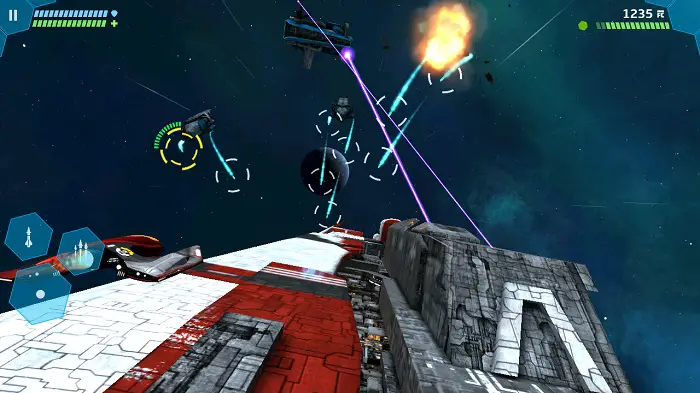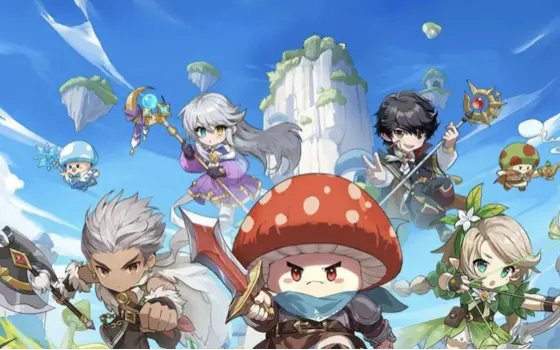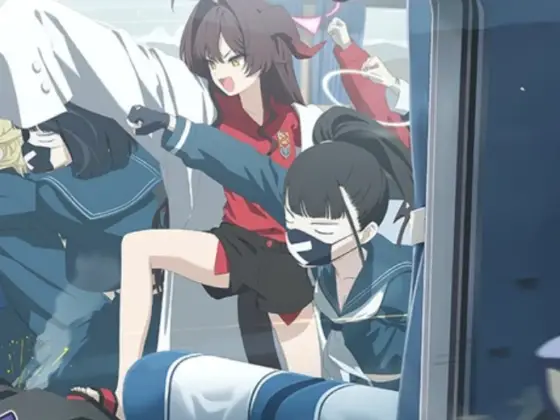 Star Horizon is a premium game in the Google Play store. It was $3.99 to download, and while I got enough content to make it worth the price, it wasn’t content I was interested in playing.
Star Horizon is a premium game in the Google Play store. It was $3.99 to download, and while I got enough content to make it worth the price, it wasn’t content I was interested in playing.
The story of Star Horizon is promising enough in the beginning — you are a pilot named John who is put into a mysterious cryo sleep. When John wakes up he decides to fly around space with his A.I. named Ellie (who is programmed to have an attitude and an opinion about EVERYTHING) trying to solve the mystery of what happened to him.
In the first mission, John is presented with an option to either save his friends or stick to his prescribed mission. As the player, you get to choose which option he goes for. Your choice affects the storyline you get to play, which is an interesting element to add to a flying game—but unfortunately the concept is introduced early and then abandoned quickly.
But the storyline overall has little to no effect on how the game progresses, regardless of what option you choose. Every level seems the same. In fact, more than once I wasn’t sure if I was replaying a level or had moved on to something new. Sometimes it felt like I was flying in circles, and for all I know, I could have been.
 Although you can maneuver the ship from side to side and do some barrel rolls in order to dodge enemy fire, the majority of your movement through the levels is on a set track. Once each level is completed there’s a checkpoint that is basically a racing game. Both the environment and the format remind me of Luke’s race to blow up the Death Star. It’s probably the most exciting element of the game, which is rather disappointing for a game that’s supposed to be heavy on story. Not only does shifting and dodge rolling actually affect your success on these checkpoints, but there’s the added challenge of trying to maneuver while attempting to shoot at your enemies.
Although you can maneuver the ship from side to side and do some barrel rolls in order to dodge enemy fire, the majority of your movement through the levels is on a set track. Once each level is completed there’s a checkpoint that is basically a racing game. Both the environment and the format remind me of Luke’s race to blow up the Death Star. It’s probably the most exciting element of the game, which is rather disappointing for a game that’s supposed to be heavy on story. Not only does shifting and dodge rolling actually affect your success on these checkpoints, but there’s the added challenge of trying to maneuver while attempting to shoot at your enemies.
The game can be played on difficulty levels of easy, normal, or hard. I started on hard and moved my way down when I got tired of playing the same checkpoint over and over. The only difference I could find between difficulties, however, was how many health and defense points I got at the beginning of the level. MAYBE the enemies were easier to shoot down, but even on the hard level the game was not particularly challenging.
There were some overall attempts made to integrate storyline and gameplay, but the difference between an enemy that had to be defeated and an area that had to be defended was somewhere between minimal and non-existent. Even visually the two were essentially the same—which may have been the reason for my ultimate downfall in a few points.
Star Horizon could not keep my attention for very long at all. I returned to it time after time hoping that the next level would be better. In between battles, I could upgrade my weapons but they all remained in the same three categories: single shot, multi-shot, and long-range torpedo. It took so long to earn enough points to upgrade that by the time I could afford anything it wasn’t worth it.
 There is one thing in which Star Horizon is head and shoulders above other games, and that is the graphics. For all the issues with the gameplay, Star Horizon is a truly beautiful flight through space. The backgrounds are serene, the bases and ships are battle-worn, and the enemies are unique. There are full planets in the distance that give you a sense of place in the universe without having to know exactly where you are. Even the little pop-up images of Jack and Ellie are highly detailed, if verging on generic.
There is one thing in which Star Horizon is head and shoulders above other games, and that is the graphics. For all the issues with the gameplay, Star Horizon is a truly beautiful flight through space. The backgrounds are serene, the bases and ships are battle-worn, and the enemies are unique. There are full planets in the distance that give you a sense of place in the universe without having to know exactly where you are. Even the little pop-up images of Jack and Ellie are highly detailed, if verging on generic.
While the game is truly a work of art, the graphics do not make up for the disconnect between story and gameplay. If only Star Horizon would pump up the stakes—give Jack something to actually fight for, and open the game up a little more to exploration—this would be a truly wonderful game.
Is it Hardcore?
No, but it wants to be?
While Star Horizon is a beautiful game and stands on a solid foundation, the story falls very short and the battles are repetitive. For a premium game, this one falls fall short of expectations.



























